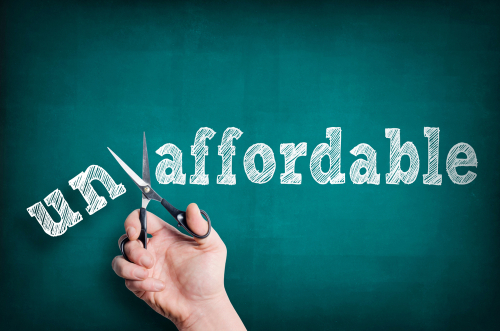When it comes to addiction, rehab is always more affordable than suffering from a substance use disorder. According to the Office of National Drug Control, every dollar spent on treatment saves $4 in health care costs. Some people spend more than $10,000 a year paying for their addiction.
With this in mind, treatment is the cheaper option. Still, the price tag can be scary if you don’t have insurance. Luckily, from payment plans to low-cost or free drug rehab, there are plenty of options to make it affordable for your situation. Keep reading to learn more.
How Much Does Rehab Cost?
The cost of rehab varies a lot. It depends on many factors, such as the specific center, how long you need to be there, and whether you’ll be going to an inpatient/residential facility or outpatient treatment center.
Detox
If you’re entering an inpatient treatment program, detox is usually included in the price. Going through detox before an outpatient program can cost anywhere from $1,000–2,000 per day. The price can go up if you need special medical care.
Inpatient/Residential Programs
Inpatient programs are the most expensive, but are also the most effective. For a 30-day program, prices tend to range around $6,000. This depends a lot on the center, though. Some may cost up to $20,000 for 30 days.
However, everyone’s situation is unique. Some may need to stay in treatment longer than 30 days. Generally, it’s best to note that the longer the program is, the higher cost will be.
Outpatient Programs
Just like inpatient treatment, outpatient program prices depend on the center and the length of time one utilizes the program. It will also depend on how many weeks you go to the treatment center. For a 90-day program, treatment can cost around $5,000.
Medication
A treatment program may require prescription medications to fight the addiction. Without insurance, these medications could cost a few thousand dollars a year.
What Are My Options Without Insurance?
At first, the out-of-pocket costs for rehab can be intimidating. You shouldn’t worry, though. Treatment is an investment in you or your loved one’s future, and there are many options that can make it more affordable and accessible. Consider the following:
State-Funded Treatment
Many states have money set apart to help people treat their addictions. For those who qualify, the state may pay for some or all of your rehab costs.
Qualification is based on different factors and varies in each state. To find out what’s available to you, you’ll need to contact the relevant agency in your state. The Substance Abuse and Mental Health Services Administration, which is part of the US government, has a directory you can use to find the phone number.
When you call, have your information ready. You may need the following:
- Information on your income
- Proof of state residence (e.g., a driver’s license)
- Proof of US residence (e.g., a passport or social security card)
- Details about the length and severity of the drug or alcohol abuse
Unfortunately, many people may end up on a waiting list. It could be some time before funds are available. In the meantime, some states have outpatient or public support programs. Also, you may move to the top of the list if you fall into one of the following categories:
- Children under the age of 18
- Seniors over the age of 65
- Pregnant women
- Homeless
- A part of other social welfare programs (e.g., child safety services or the prison rehabilitation system)
Find Low-Cost Insurance
Passed in 2010, the Affordable Care Act requires all insurers to pay for drug and alcohol abuse treatment. The easiest way to see what you qualify for is to visit HealthCare.gov.
Depending on your income, you might qualify for government-funded medicare, medicaid or a low-cost insurance plan. Similar to regular insurance plans, you’ll need to check with treatment centers to see if they accept medicare or medicaid.
Payment Plans
One of the best ways to make rehab affordable is through a payment plan. With a payment plan, you can pay the cost of your treatment at a low monthly rate. You don’t have to pay it in full right when you check in. Some treatment centers do offer payment plans, so it’s best to call in advance and ask.
Scholarships and Charities
Many non-profit rehab centers receive federal grants to fund treatment. They may use this money to provide low-cost or free rehabilitation to people in need. Similarly, a lot of charities may offer low-cost or free treatment.
Treatment Centers Will Work With You
If you or a loved one needs treatment, you don’t need to worry about money. Not only is rehab much cheaper than an addiction, but there are plenty of options to help fund treatment.
The easiest way to find out what funding options you qualify for is to talk to your local treatment centers. In addition to having payment plans, sliding scales or scholarships of their own, their professionals can help direct you to government aid or other possibilities. To get started, look through our directory to find a treatment center near you.
Sources:
- Mental health & substance abuse coverage
- SAMHSA Directory of Single State Agencies for Substance Abuse Services
- The Financial Toll of Addiction

